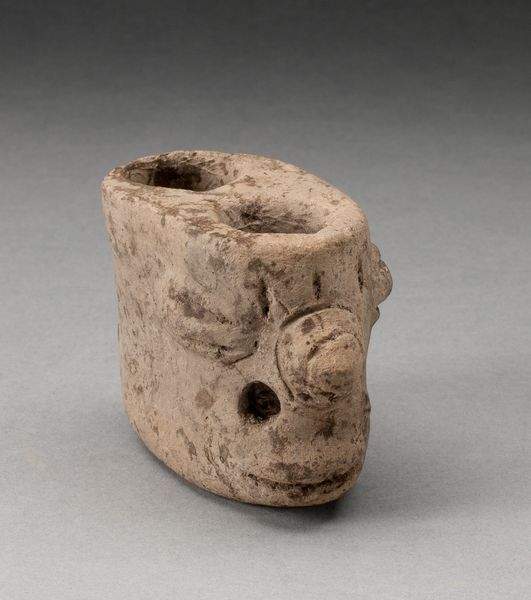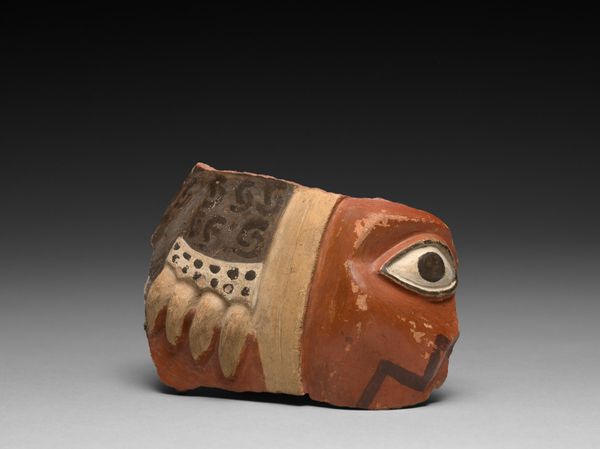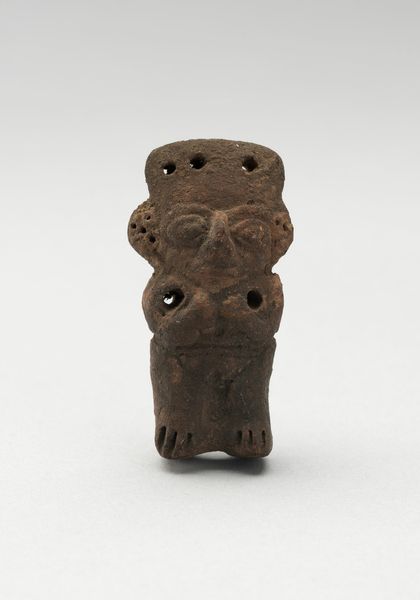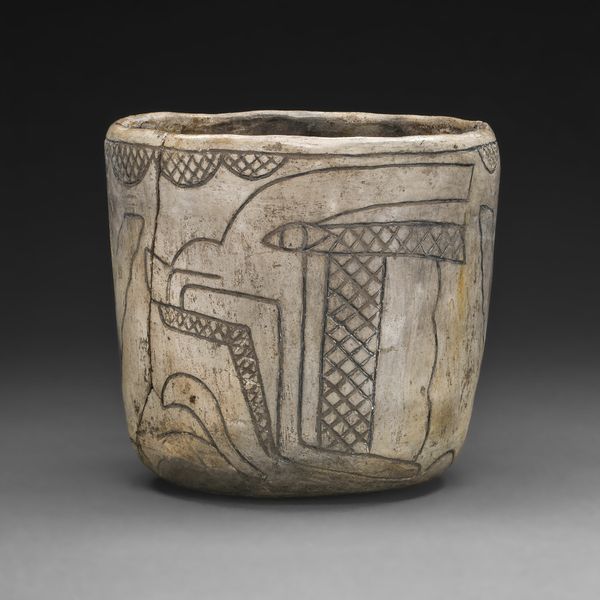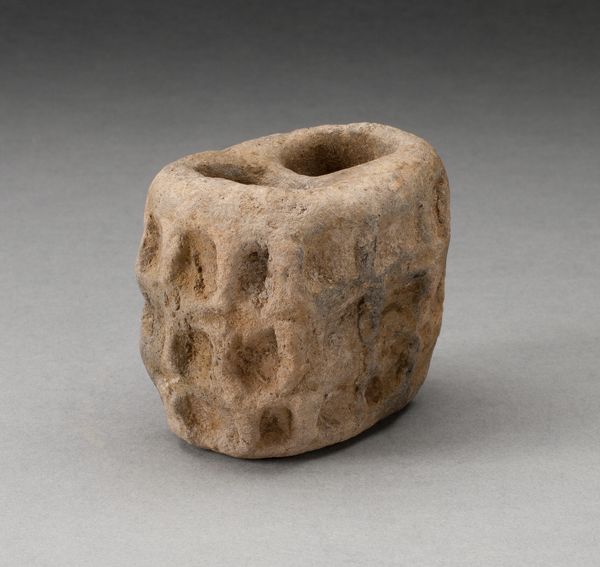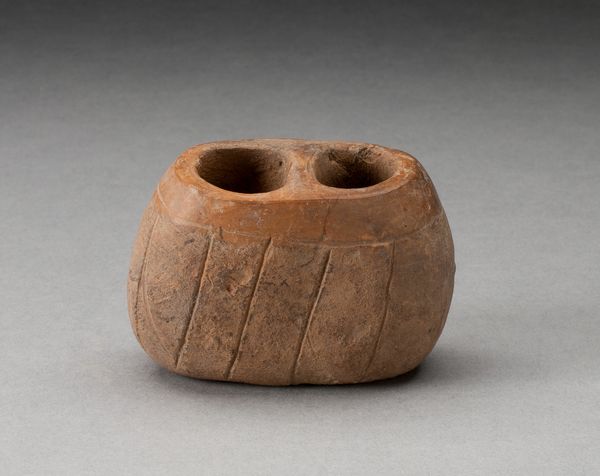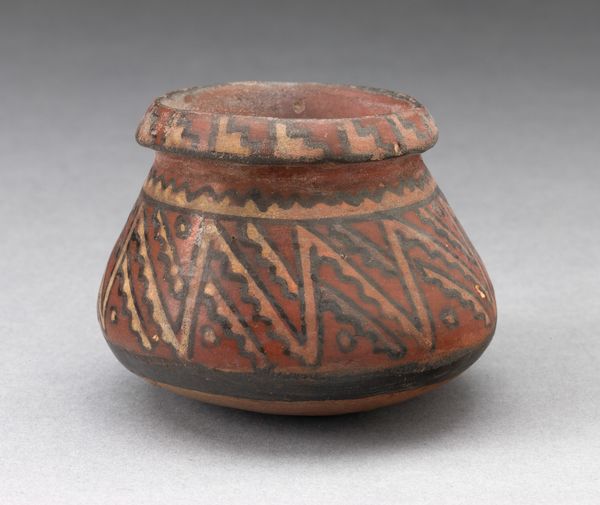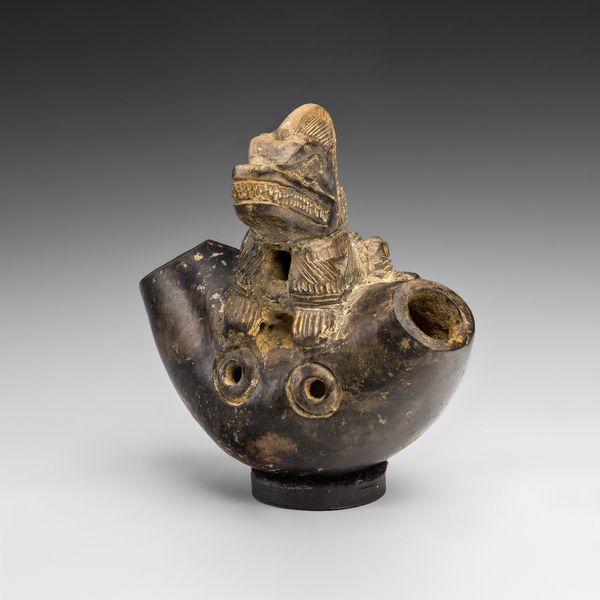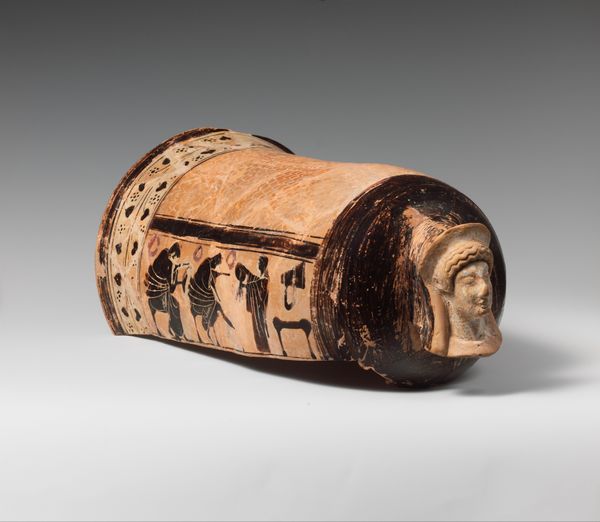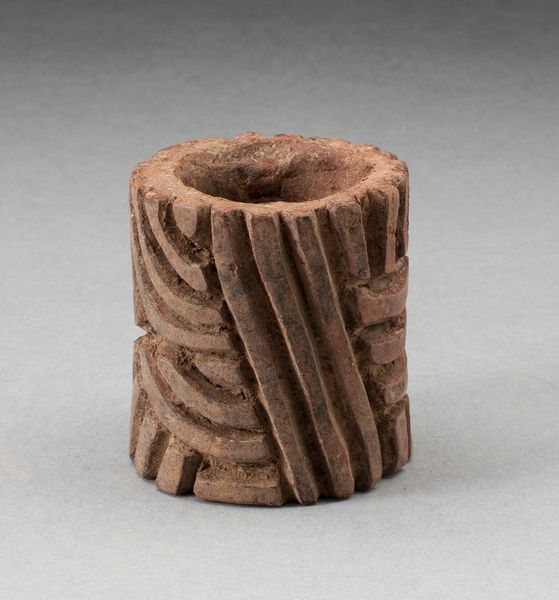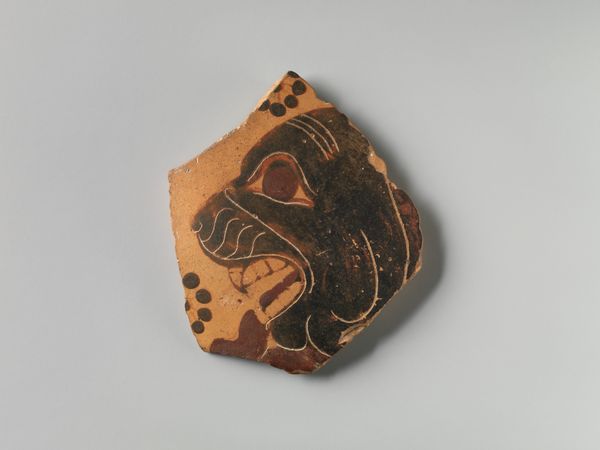
Head Fragment from a Large Ceremonial Jar Possibly 700 - 800
0:00
0:00
ceramic, earthenware, terracotta
#
ceramic
#
earthenware
#
geometric
#
line
#
terracotta
#
indigenous-americas
Dimensions: 11.4 × 8.6 cm (4 1/2 × 3 3/8 in.)
Copyright: Public Domain
Curator: Here we have a ceramic fragment from a large ceremonial jar, created by the Tiwanaku culture, likely between 700 and 800 AD. Editor: It strikes me as incredibly stylized. The geometry is strong, but I am wondering, what kind of symbolism would you say resonates with the Indigenous-Americas artistic conventions from this time? Curator: The use of repeating motifs—notice those almost S-shaped figures filling a broad band—suggests a highly structured symbolic system. Think about the repetition itself, creating a pattern which might have reflected cosmological order. Editor: I'm particularly drawn to the lower register with its carefully placed dark dots against a lighter field; a clear sense of duality, perhaps representing day and night. And directly beneath this band is an unusual formation: it seems to morph into finger-like adornments, could this element allude to ritual gestures? Curator: Precisely. The lines, too, their placement and direction… the convergence suggesting, perhaps, the focal point of a ceremony. One could read this object almost as an abstract map of Tiwanaku spiritual practices. Editor: This abstract language is definitely rich. Look how these different patterned regions articulate. You have stacked “S” curves set upon hatched lines with each one meeting at this border above the "toes". It almost creates a kind of structural compression between two regions of pattern. This must speak to symbolic relations. Curator: Indeed, and think about the jar as a whole—a vessel. Vessels contain, they protect, they offer sustenance. Considering this was a ceremonial object, these qualities could take on added importance. Editor: These stylized elements really create a striking whole that makes this fragment pulse with a resonance that far outlives the cultural moment in which it was rendered. Curator: For me, what is most intriguing about studying this piece is the potential for semiotic interpretation, to understand what sort of coding took place across it and to apply theories about pattern that emerge from our understanding of design to it.
Comments
No comments
Be the first to comment and join the conversation on the ultimate creative platform.

